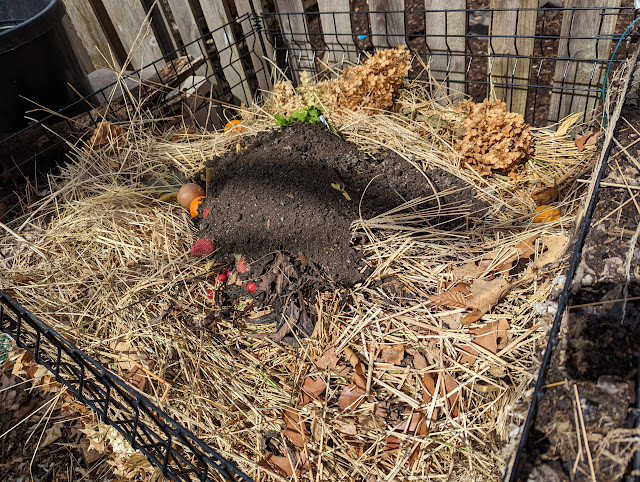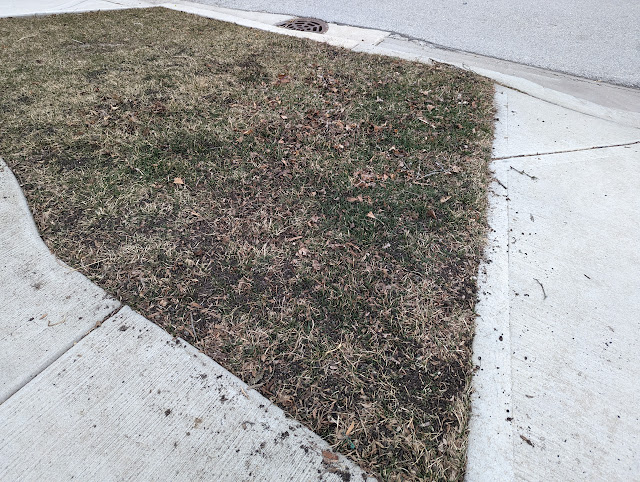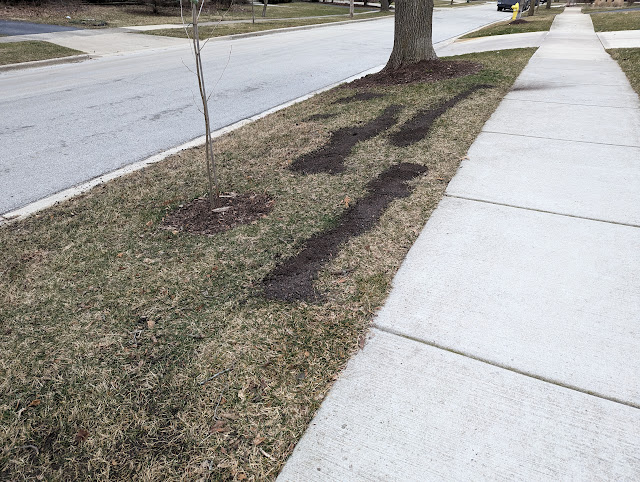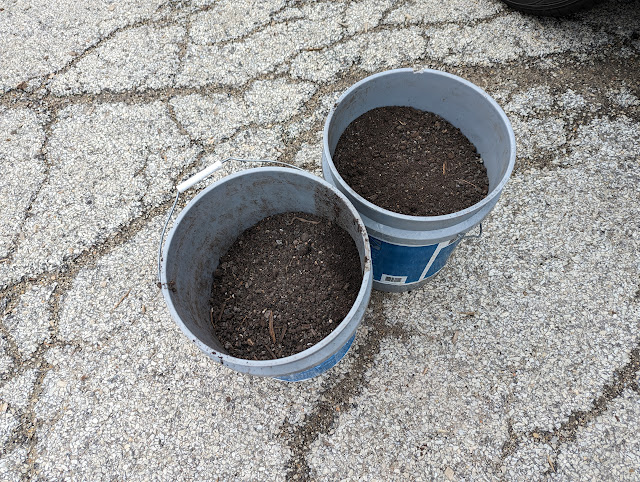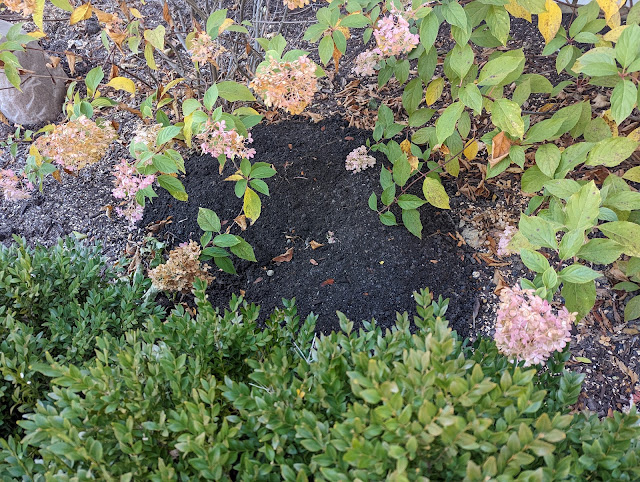Parkway Biosolids Update - April 2023

Here's a quick, early-April check-in on what has happened since the application of a light layer of municipal biosolids as topdressing to our parkway - specifically the section that is IB2DWs. I top-dressed with these Downers Grove biosolids in early March - so right about one month ago. Peek at this post to see the state of the lawn in this section pre-biosolids . Then...have a look below. On the right, is *our* section of the parkway. On the left is the untreated section. That's an emerging domination line , isn't it? Sure feels like a pretty clear outcome from the biosolids, doesn't it?


